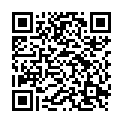|
|
|
| Module code: KI846 |
|
2V+2U (4 hours per week) |
|
5 |
| Semester: 2 |
| Mandatory course: no |
Language of instruction:
German |
Assessment:
Project work
[updated 08.05.2008]
|
KI846 Computer Science and Communication Systems, Master, ASPO 01.04.2016
, semester 2, optional course, informatics specific
PIM-WI35 (P221-0164) Applied Informatics, Master, ASPO 01.10.2011
, semester 2, optional course, informatics specific
|
60 class hours (= 45 clock hours) over a 15-week period.
The total student study time is 150 hours (equivalent to 5 ECTS credits).
There are therefore 105 hours available for class preparation and follow-up work and exam preparation.
|
Recommended prerequisites (modules):
None.
|
Recommended as prerequisite for:
|
Module coordinator:
Prof. Dr. Thomas Kretschmer |
Lecturer: Prof. Dr. Thomas Kretschmer
[updated 19.07.2007]
|
Learning outcomes:
After completing this module students will
- understand and be able to use platform-independent document formats
- be able to design multimedia content based on open standards
- understand and be able to take into account different target groups and target media.
[updated 08.05.2008]
|
Module content:
- Basics (psychology of perception, accessibility (input and representational aids), internationalization)
- Target-oriented design of user interfaces, device- and platform-independent representation
- Structure and display of complex multimedia documents
- Automated document generation
[updated 08.05.2008]
|
Recommended or required reading:
http://www.w3.org
COOPER, Alan; REIMANN, Robert: About Face 2.0: The Essentials of Interaction Design, Wiley 2003
BULTERMAN, Dick; RUTLEDGE, Lloyd: SMIL 2.0 : Interactive Multimedia for Web and Mobile Devices, Springer 2004
MEYER, Eric: Cascading Style Sheets: The Definitive Guide, 2nd Edition, OReilly 2004
[updated 08.05.2008]
|
Module offered in:
SS 2013,
SS 2012,
SS 2011,
SS 2010,
SS 2009,
...
|


